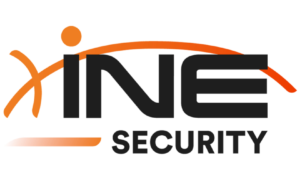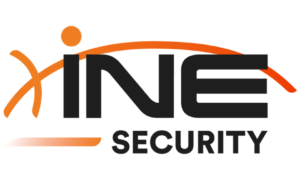Cloud-native engineering has transformed how software is built, shipped, and operated. Teams move faster than ever, pushing code into production daily across multiple public cloud platforms. Workloads spin up and down in seconds and ownership is distributed across teams and tools.
These shifts offer massive flexibility, but they’ve also made traditional security models outdated. There’s no longer a fixed perimeter to protect and assets don’t sit around long enough for weekly scans or static firewall rules to catch threats.
Security now has to work with the speed and shape of modern development, and that means aligning security with cloud-native design and adapting to the broader cultural and operational shifts that drive it. Infrastructure is defined as code: code lives in distributed repositories and everything from builds to deployments is automated through the use of pipelines.
Developers are on the front lines pushing changes through GitOps workflows and service-to-service communication often happens without any human interaction. These changes have created a new kind of operating environment where security must be built into the process itself not bolted on after the fact.
Why the Old Model Doesn’t Work Anymore
Most security strategies were built for slower cycles and static environments. In those worlds it made sense to schedule monthly patching windows or set broad network rules at the edge.
But in today’s security environment assets are transient and many breaches come from misconfigurations that fly under the radar. Threat actors are able to actively exploit gaps left by default settings, forgotten tokens, and APIs that were never properly hardened.
Recent industry studies have highlighted how rare it is for organizations to validate their cloud defenses with the speed and frequency needed. Few run daily control tests and even fewer have real-time visibility into all their cloud workloads. That leaves defenders reacting to incidents rather than preventing them and it’s a losing game when attackers only need seconds to exploit an open bucket or over-permissive role.
New Threats, New Priorities
Attackers have shifted their focus too; instead of trying to breach the edge they target the internals of cloud systems where misconfigured storage, insecure APIs, and sprawling entitlements often leave the door open. The rise of ephemeral infrastructure like short-lived containers and serverless functions creates blind spots for scanners that were built for persistent hosts.
Machine-to-machine communication has overtaken human logins which means traditional identity and access models no longer fit. Compromises often begin with small footholds and spread through privilege chains and stale roles that haven’t been reviewed in months. Supply chain attacks are becoming more common with malicious code slipping in through dependencies and third-party components that were never verified.
Principles That Match Cloud Velocity
Effective security today starts earlier and goes deeper, and shifting left means putting security controls into the build process using policy-as-code and verifying artifacts before they’re ever deployed. At the same time defenses can’t stop at the pipeline. Shielding right means protecting workloads in production using real-time controls that adapt to the environment as it changes.
Zero trust isn’t a buzzword in this context, it’s the default posture. That means authenticating every request between microservices, verifying both identity and context, and applying policy through engines that evaluate each transaction on the fly.
With service meshes and kernel-level observability tools, teams get high-fidelity insights into what’s happening inside clusters without relying on fragile agent-based setups.
Unified platforms are helping close the gaps. Cloud-native application protection platforms now offer a single view across posture workloads and entitlements. That gives teams a common language for risk and lets them act faster when something goes wrong.
As the market grows it’s becoming standard for companies to consolidate fragmented tools into these platforms to streamline remediation and scale protections across teams.
Practical Moves That Actually Work
Security leaders are shifting their focus from static controls to continuous validation. Breach-and-attack simulations are moving from annual tabletop exercises to automated weekly jobs with some teams pushing toward daily validation loops.
Every build pulls in a web of third-party images, so software bills of materials and artifact signing are now baked into CI pipelines. Unsigned images get blocked from entering clusters.
Identity is no longer just about users: secrets rotate automatically with short time limits and access roles get reviewed on sprint cadences. Storage isn’t treated as static either; volumes are encrypted by default and traffic between services is filtered using network policies, even inside the same namespace.
Incident response planning has changed, too. Chaos engineering is being used to run security-specific scenarios, helping teams discover blind spots in telemetry and refine their detection rules under realistic conditions.
Working Smarter When Talent Is Scarce
Security teams aren’t getting larger in most cases, and, in fact, the global shortage of cybersecurity professionals is expected to widen through 2025. That makes automation more than helpful; it’s the only way many organizations can keep pace.
Self-service guardrails let developers move fast without waiting for approvals while policy-as-code makes it possible to scale enforcement across environments without manual reviews. These tools aren’t just about speed; they help reduce human error which remains one of the top causes of breaches.
Compliance Now Means Continuous Evidence
The current regulatory environment is quickly catching up to cloud realities. New rules in both the EU and US are putting pressure on companies to prove they can detect, respond, and recover from incidents fast, which means evidence has to be collected automatically and stored in ways that can’t be altered. Immutable logs, real-time control testing, and audit-ready reports are replacing manual checklists and annual assessments.
It’s not just about passing audits anymore. Continuous compliance builds trust with customers, investors and regulators and it helps teams catch issues before they turn into incidents.
The Future of Cloud-Native Computing
The shape of modern engineering has changed and security has to match that shape. It’s about speed, context and shared responsibility across teams.
Zero trust access patterns, converged platforms, AI-driven analysis, and secure-by-default pipelines aren’t futuristic goals; they’re becoming the standard for staying safe in the cloud.
Read More From Techbullion



































